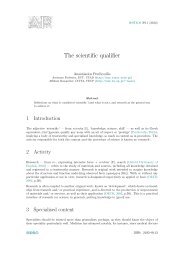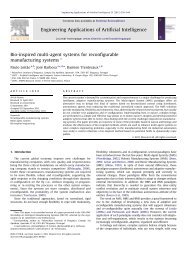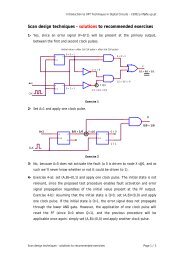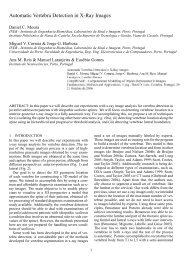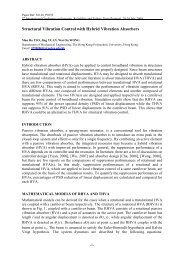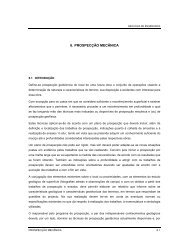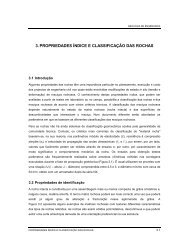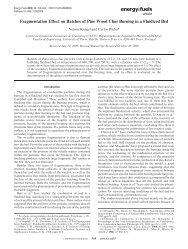Use-Case Controller
Use-Case Controller
Use-Case Controller
Create successful ePaper yourself
Turn your PDF publications into a flip-book with our unique Google optimized e-Paper software.
<strong>Use</strong>-<strong>Case</strong> <strong>Controller</strong> 13<br />
• Visibility of the originating use case model in the<br />
implementation code. The pattern suggests a straightforward<br />
design and implementation of use-case realizations.<br />
Assuming that the pattern is consistently instantiated<br />
following some coding convention, use-case implementations<br />
will be easy to recognize at the code level and to be traced<br />
back to the respective model.<br />
• Flexible configuration of applications using pluggable use case<br />
implementations. <strong>Use</strong>-case controllers encapsulate the most<br />
important functionality specified in the use case, and can be<br />
easily replaced even at run-time. Therefore, the pattern<br />
allows the configuration of applications by plug-in of use<br />
case components having use-case controllers at their heart.<br />
In contrast, the pattern imposes the following liabilities:<br />
• Increased number of classes. As the pattern introduces a<br />
conceptual separation between user interface, model and<br />
controller objects, more classes are needed to implement the<br />
same functionality. This aspect must be considered having in<br />
mind the benefits of an increased separation of concerns and<br />
changeability versus the dimension of the system at hands.<br />
• Increased complexity. The pattern suggests the assignment of<br />
a control object for each use case, which can result in code<br />
more complex than the original. When the use-case<br />
behaviour is not complex enough to justify the usage of a<br />
separate control object, the control object should be avoided.<br />
• Control flow of the application slightly harder to trace directly<br />
from a strict reading of the code as one must be aware of the<br />
design principles and coding convention that lead to the<br />
application logic being organized around the concept of use<br />
cases. On the other hand, once known the underlying usecase<br />
model, the readability and modularity of the<br />
implementation is largely improved.<br />
• Close relation between models and views to controllers.<br />
<strong>Controller</strong>s directly invoke functionality from models and<br />
views, thus implying that changes to interfaces of models<br />
and views may have impact on controllers.<br />
• Potential instability of the implementation mainly when the<br />
underlying use case model is unstable or badly organized.<br />
For these situations it may help to decompose use-cases into<br />
Copyright © 2001 Ademar Aguiar, Alexandre Sousa and Alexandre Pinto.<br />
All rights reserved. Permission granted to copy for all purposes of EuroPLoP’2001.




